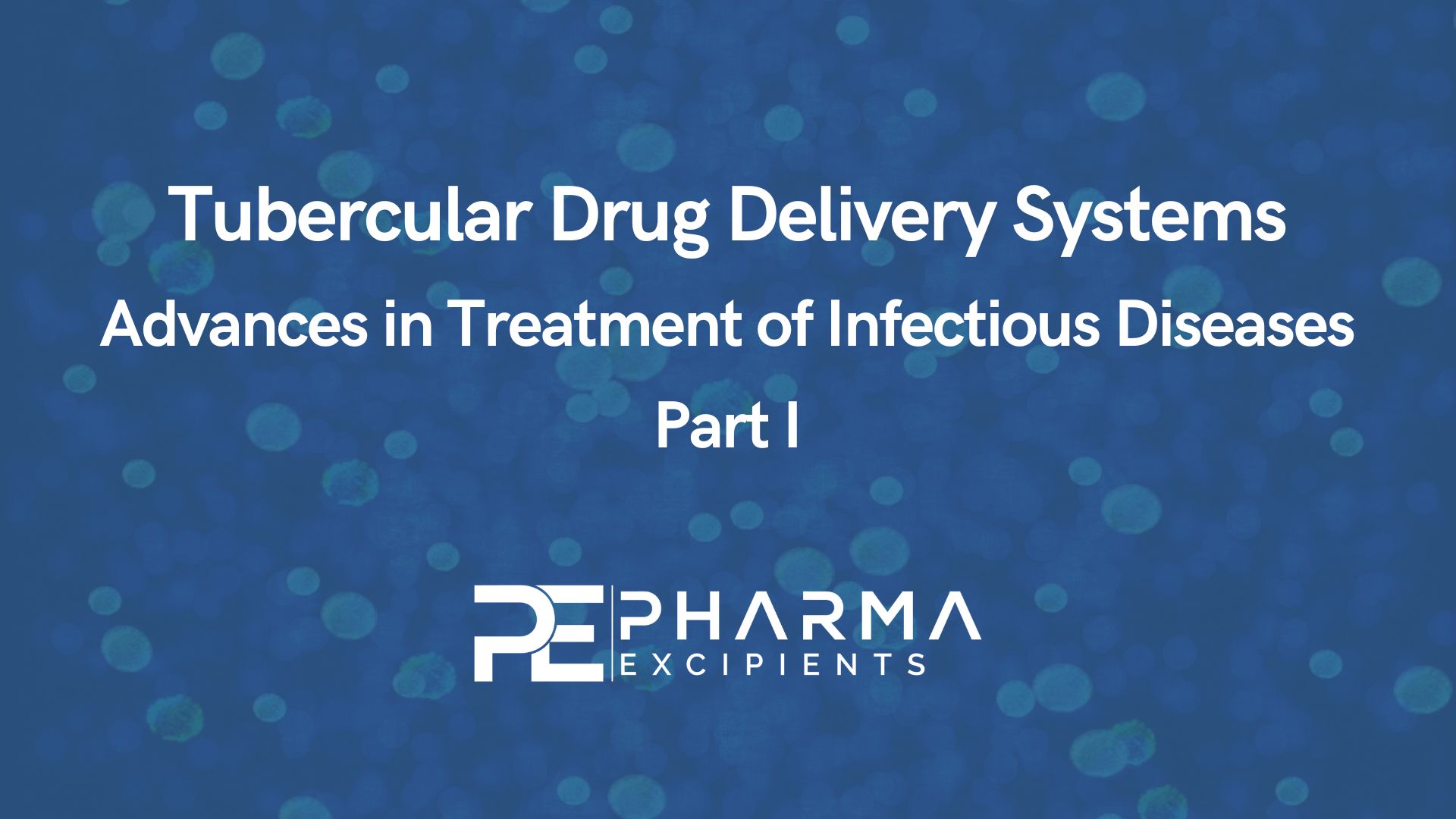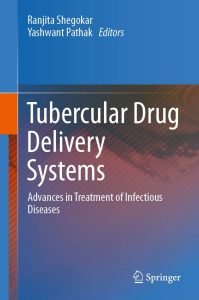Tubercular Drug Delivery Systems – Advances in Treatment of Infectious Diseases – Part I/II

 The new book “Tubercular Drug Delivery Systems – Advances in Treatment of Infectious Diseases” book targets new advances in areas of treatment and drug delivery sciences for tuberculosis. It covers advances in drug therapy and drug targeting that focus on innovative trend defining technologies and drug delivery platforms in the understanding of host-pathogens relationship for providing better therapy. A wide variety of novel and nano-formulations using promising technologies are being explored to deliver the drug via different administration routes.
The new book “Tubercular Drug Delivery Systems – Advances in Treatment of Infectious Diseases” book targets new advances in areas of treatment and drug delivery sciences for tuberculosis. It covers advances in drug therapy and drug targeting that focus on innovative trend defining technologies and drug delivery platforms in the understanding of host-pathogens relationship for providing better therapy. A wide variety of novel and nano-formulations using promising technologies are being explored to deliver the drug via different administration routes.
It addresses the gap between new approaches and old treatment modalities and how they are superior in pharmacological performance when tested in in-vitro and in-vivo. Audience from wide range group like from researchers to regulatory bodies can benefit from the compiled information to find out patient needs and current research advances in the field of tuberculosis research.
- New advances in tuberculosis treatment, drug delivery, therapy and targeting.
- Only publication with a roadmap for drug delivery that also covers clinical and medicinal aspects.
- Covers nanoformulations and micro formulations.
Part I: See three out of 15 interesting chapters and the corresponding abstracts:
Polymeric Nanoparticles in Tuberculosis
Chapter 5
Tuberculosis (TB) is an infectious disease caused by the bacteria Mycobacterium tuberculosis (Mtb). TB causes the most human deaths than any other diseases from a single infectious agent. Treatments of TB are long and costly and have many limitations. Intracellular bacilli are slow growing and difficult to target, which is augmenting the emergence of multidrug resistance. Targeting intracellular Mycobacterium tuberculosis is very challenging, but nanomedicine may offer a solution. Nanomedicine is a significantly growing research area and offers the potential for specific disease targeting, dosage reduction, and intracellular drug delivery. Different polymers of natural or synthetic origin which are commonly used for the fabrication of nanoparticles with antitubercular drugs are outlined in this chapter. Polymeric nanoparticles have recently attracted increasing attention in tuberculosis treatment due to their unique properties. Polymeric nanoparticles provide an innovative therapeutic alternative to improve the limitations and disadvantages of the conventional available treatments for tuberculosis.
Read chapter 5 here
Solid Lipid Nanoparticles in Tuberculosis
Chapter 6
Tuberculosis (TB) is a deadly disease spread by single infection agents. It creates a huge burden on the healthcare system for the development of effective therapeutics therapy. For the effective treatment of TB, the recent focus is on the avoid multidrug resistance and reducing toxicity. In this context, solid lipid nanoparticles (SLNs) are rising as an alternative and effective strategy to treat TB from the scientific literature data. SLNs are formulated using biodegradable and biocompatible solid lipids. Drugs are embedded into solid lipids which provide the sustain and control release of drugs. Surface modification of SLNs is highly useful for the target delivery of drugs to the lungs and also protection against multiple drug resistance. Still, research is going on in the formulation area for the development of effective delivery platform technology that creates continuous interest in its investigation.
Read chapter 6 here
Liposomes for Delivery of Antitubercular Drugs
Chapter 8
TB is a severe infectious disease that is yet to be eradicated and controlled. The ongoing therapy of TB (DOTS strategy) is associated with certain limitations including a complicated therapeutic regimen, prolonged therapy with a multidrug combination, patient noncompliance, off-target distribution of the bioactive(s), subtherapeutic levels at the target site, appearance of several adverse effects, and development of multidrug resistance (MDR). The liposomes-based nanomedicines have been developed to offer distinctive benefits. They can potentially address the challenges associated with conventional therapeutic options. These nanoconstructs allow an increase in the bioavailability of the bioactive(s). Consequently, the frequency of administration of drugs and duration of therapy are reduced. The results obtained with such nanoplatforms, however preliminary, are promising. They may be extremely useful alternatives to current therapy as they improve the targeting ability of the payloads at the site of infection and cell-specific delivery. Furthermore, integrating the liposomal nanoconstructs with the inhalational or pulmonary route of administration provides the most promising approach in anti-TB drug therapy. This chapter outlines the potential role of liposomes in addressing the challenges associated with TB chemotherapy.
Read chapter 8 here
Part II will be published tomorrow. If you can´t wait, find and read the full book here
Source: Ranjita Shegokar, Yashwant Pathak, Tubercular Drug Delivery Systems – Advances in Treatment of Infectious Diseases, 2023, Springer Link, https://link.springer.com/book/10.1007/978-3-031-14100-3
See our background article on World TB Day:


